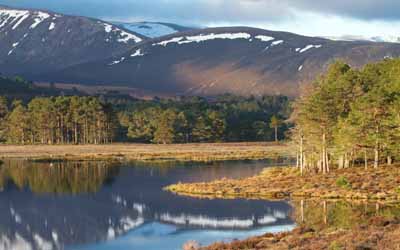As I watch the predator, its flaming orange-red tendril outstretched, it makes a catch. Its prey writhes, working itself deeper into a smothering grip. The flagrant sunset-coloured carnivore has made little effort to conceal itself, but its prey was unable to resist the allure of its sticky trap.
Crouching on a boardwalk suspended over an ancient peatland, I’ve just watched a round-leafed sundew plant ensnare a Scottish midge – one tiny instance of the bog acquiring the resources necessary to sustain the otherworldly landscape of Flow Country, in Caithness and Sutherland in the north of Scotland.
The vibrant sundew, which measures only an inch or so across, is surrounded by the more sober greens and earthy reds of sphagnum mosses. Though less flashy, sphagnum is arguably far more remarkable than the carnivorous sundew. It’s a plant that seems to carry its habitat with it, able to hold 20 times its weight in water and containing less solids than milk. If you pick up a living strand of sphagnum, one end looks much like the other because it has no roots. Each wet green frond sits in the middle of a chaos of other fronds, all saturated in water and perched on top of their predecessors.
READ MORE: BBC

